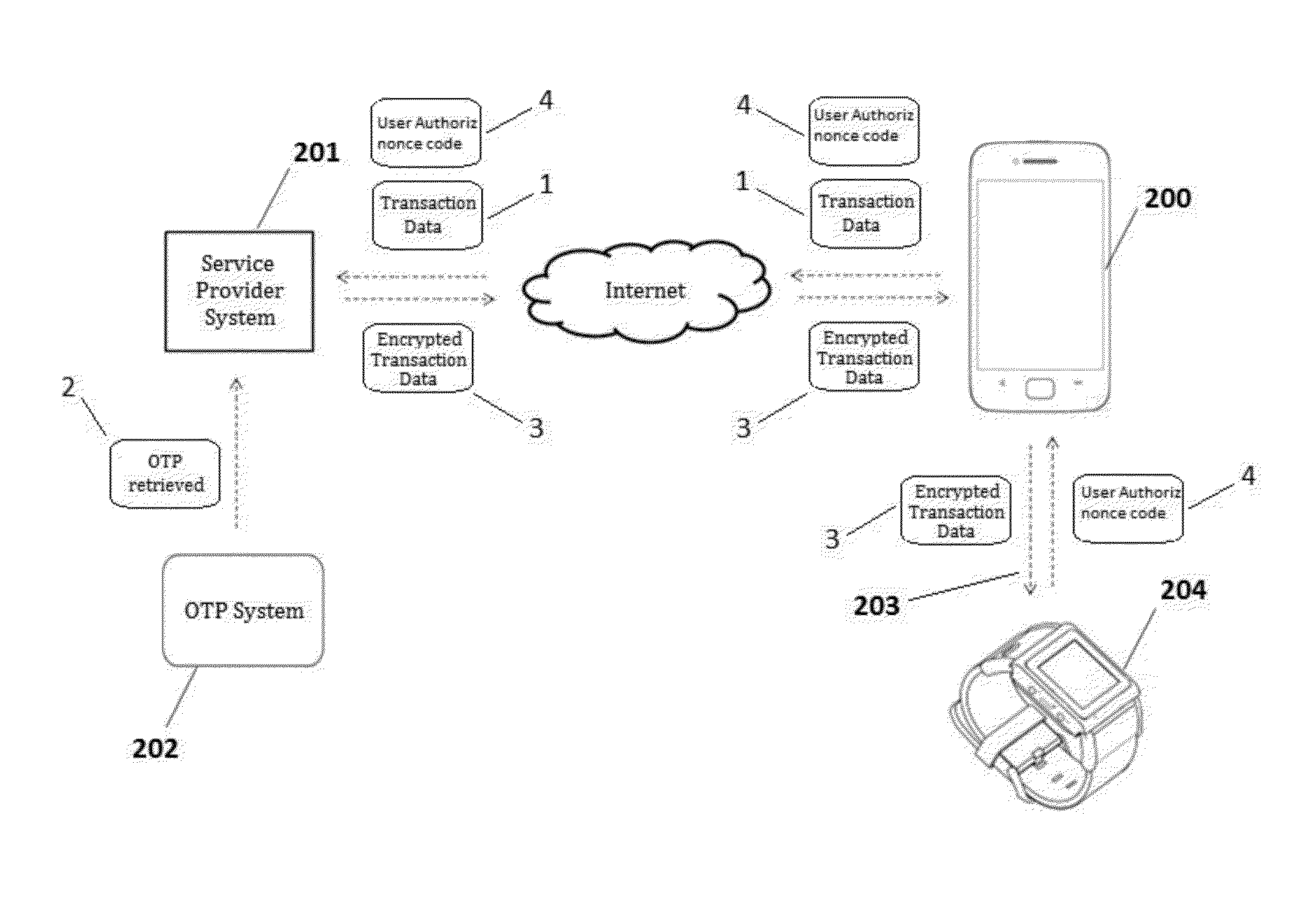Method for multi-factor transaction authentication using wearable devices
a multi-factor transaction and wearable technology, applied in the direction of digital data authentication, payment protocols, security arrangements, etc., can solve the problems of harmed users, inability to verify the integrity of transaction data, and inability to improve security against common attacks
- Summary
- Abstract
- Description
- Claims
- Application Information
AI Technical Summary
Benefits of technology
Problems solved by technology
Method used
Image
Examples
Embodiment Construction
[0022]Reference will now be made in detail to the embodiments, examples of which are illustrated in the accompanying drawings, wherein like reference numerals refer to the like elements throughout. The embodiments are described below to explain the present invention by referring to the figures.
[0023]Nowadays, mobile devices (e.g.: smartphones, tablets, notebooks) are increasingly being used to perform electronic financial transactions via Internet. Such electronic financial transactions include, for example, purchasing products and services, bill payments, transferring funds between bank accounts, etc.
[0024]While the (financial) transaction systems and services offered over mobile devices become more valuable, sophisticated and in widespread use, the incidence of fraudulent transactions have also increased. Mobile devices have been successfully hacked, so that the access to “supposedly secure” web sites (such as banking and shopping sites) has become problematic, since the password ...
PUM
 Login to View More
Login to View More Abstract
Description
Claims
Application Information
 Login to View More
Login to View More - R&D
- Intellectual Property
- Life Sciences
- Materials
- Tech Scout
- Unparalleled Data Quality
- Higher Quality Content
- 60% Fewer Hallucinations
Browse by: Latest US Patents, China's latest patents, Technical Efficacy Thesaurus, Application Domain, Technology Topic, Popular Technical Reports.
© 2025 PatSnap. All rights reserved.Legal|Privacy policy|Modern Slavery Act Transparency Statement|Sitemap|About US| Contact US: help@patsnap.com



